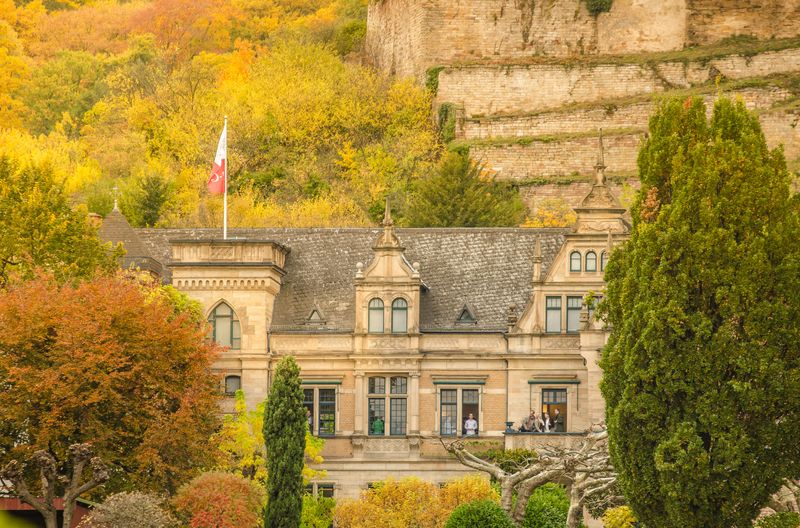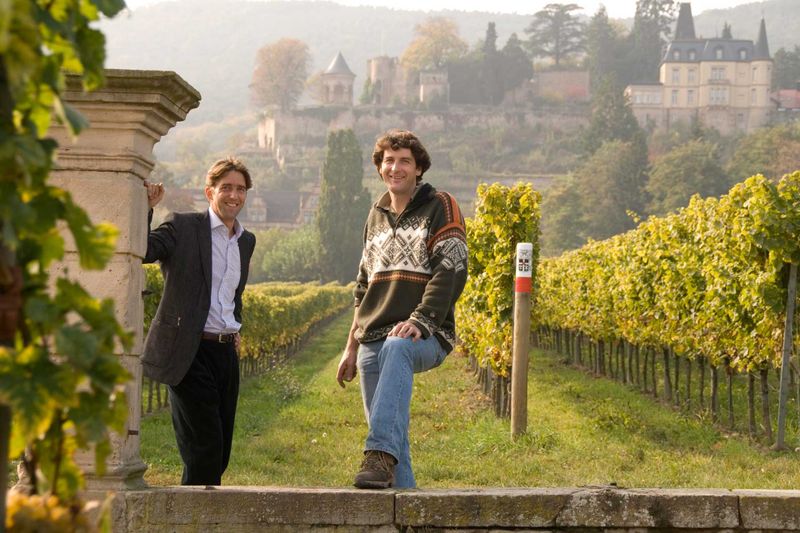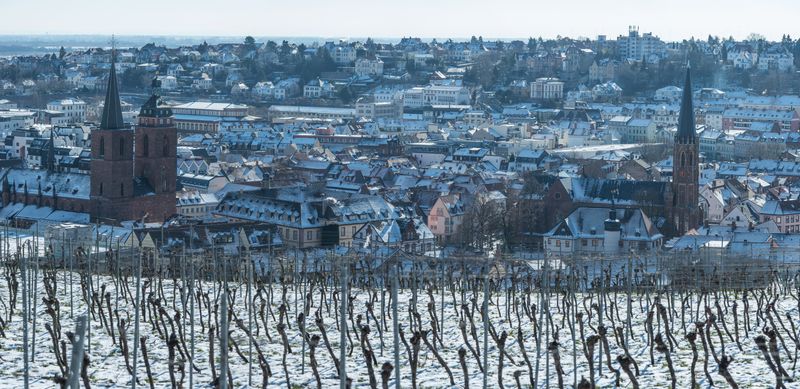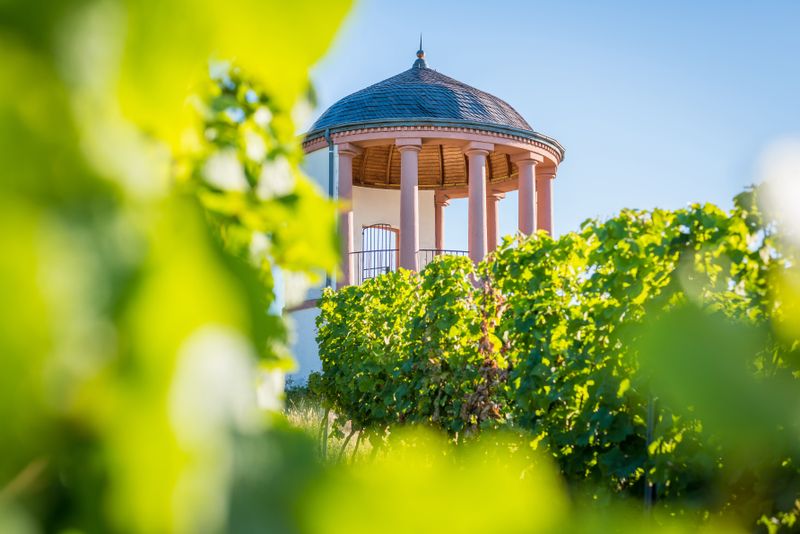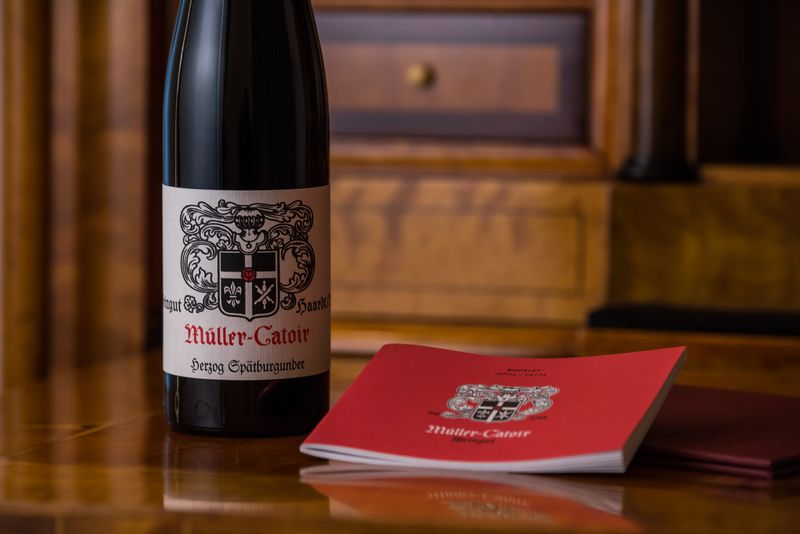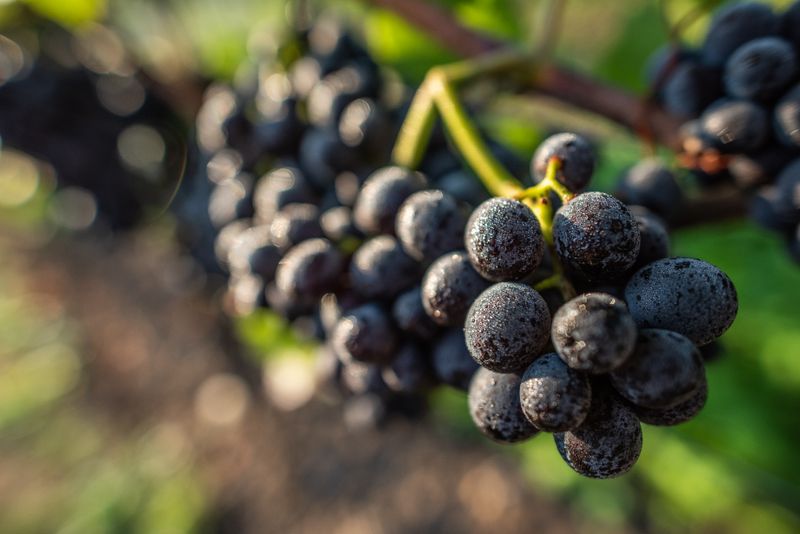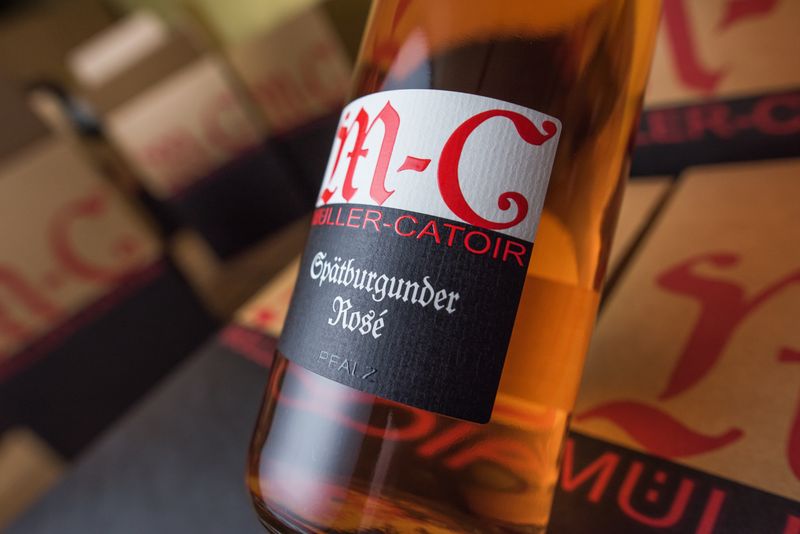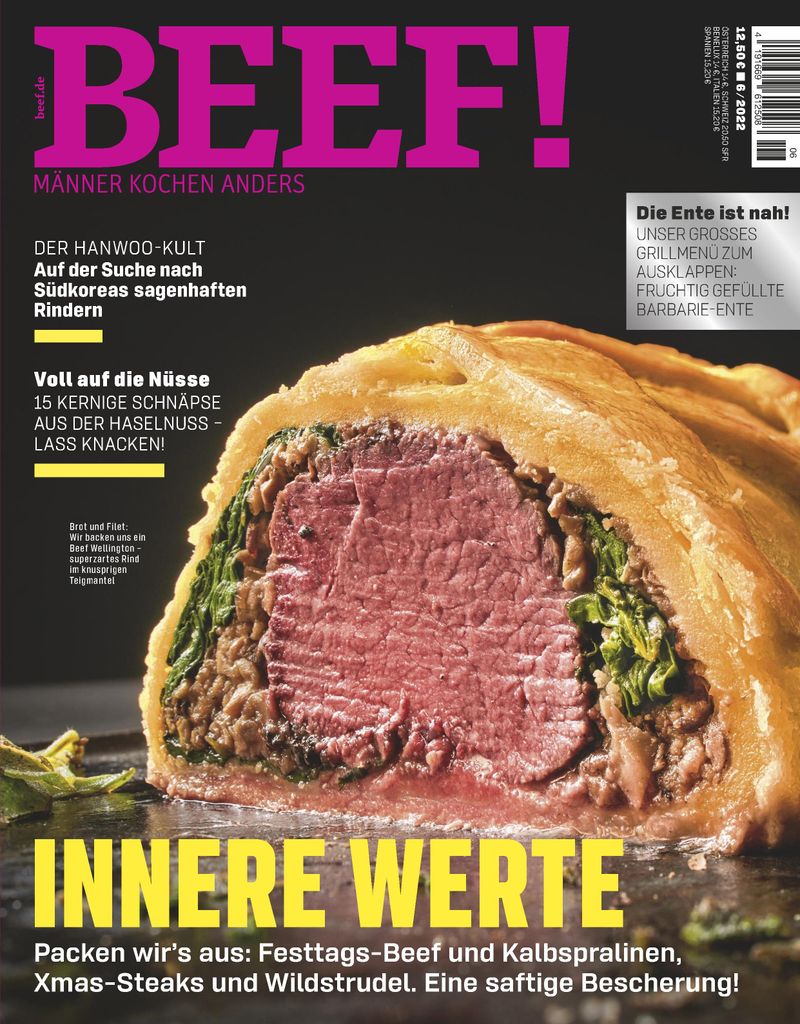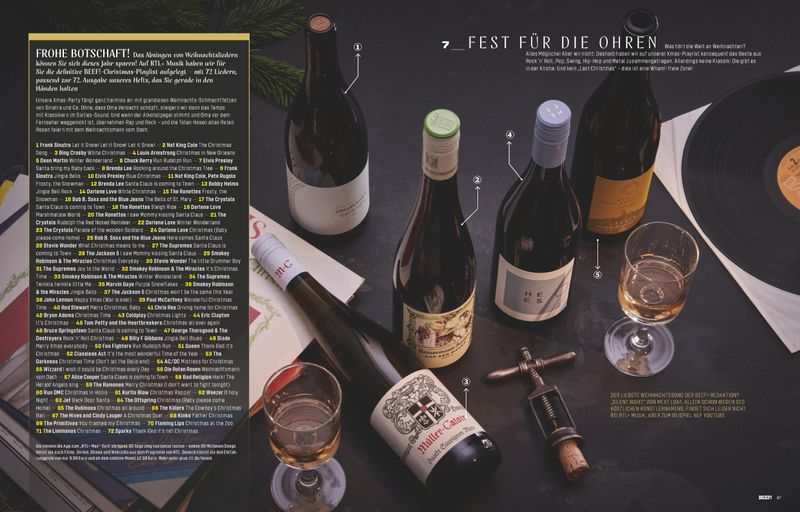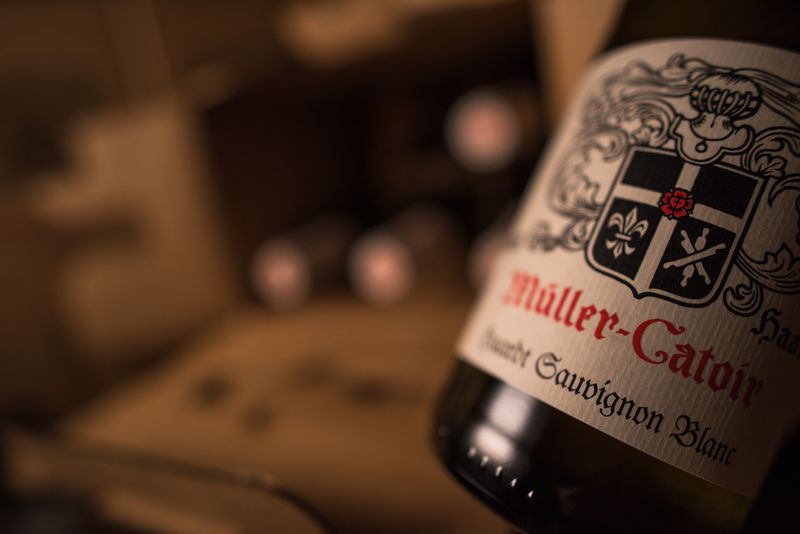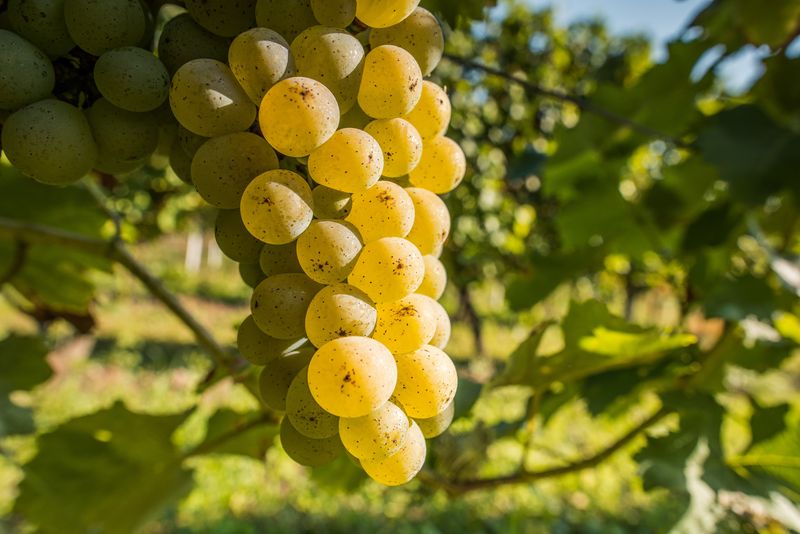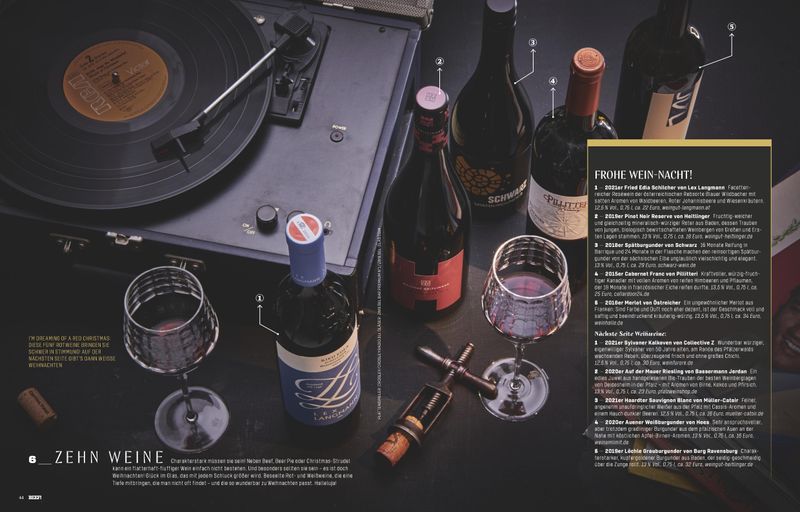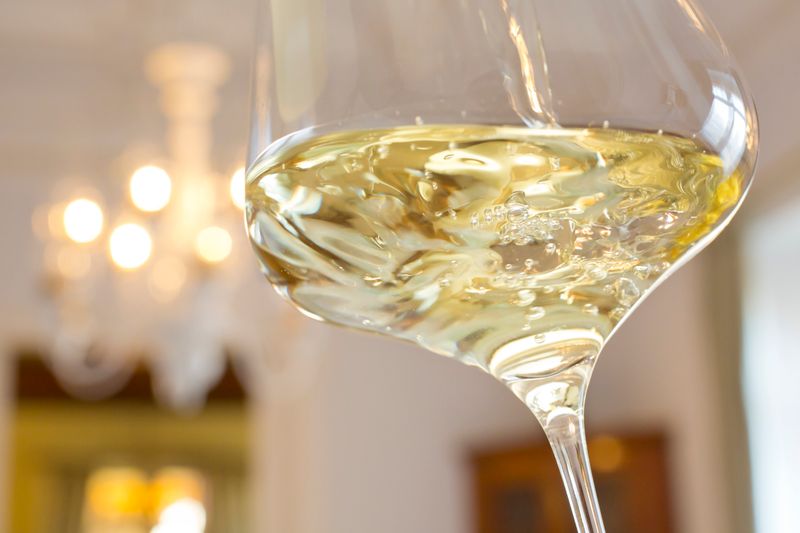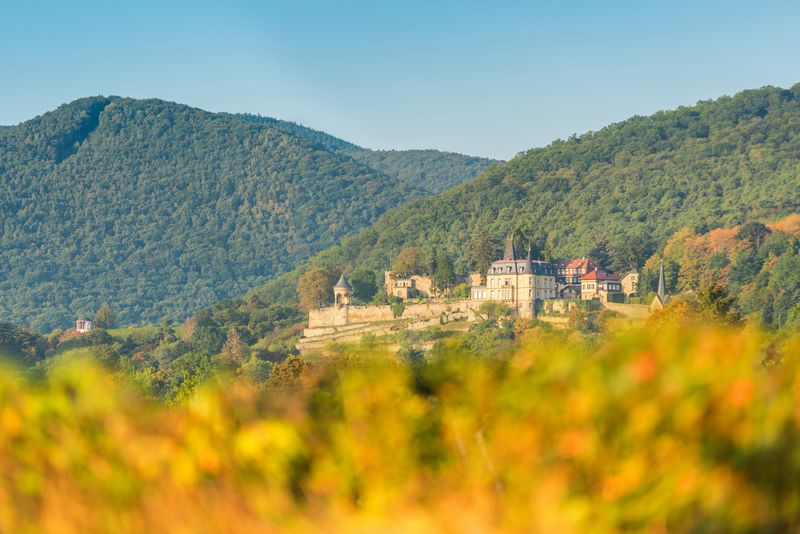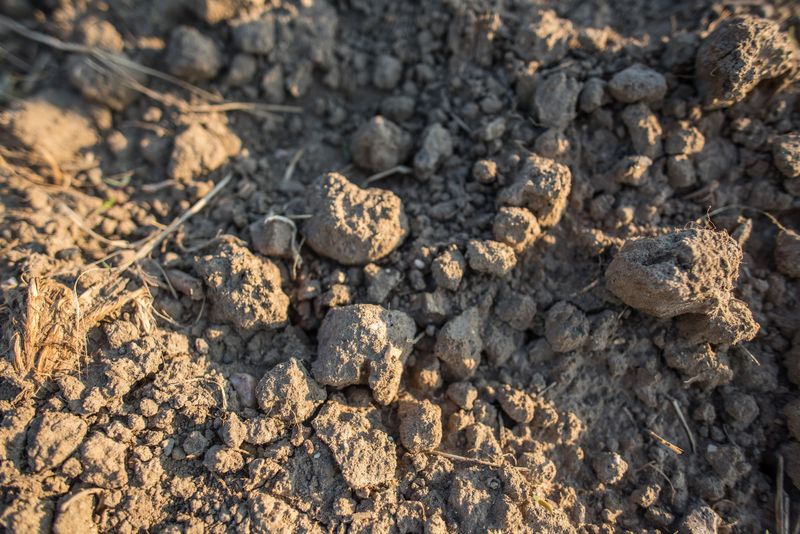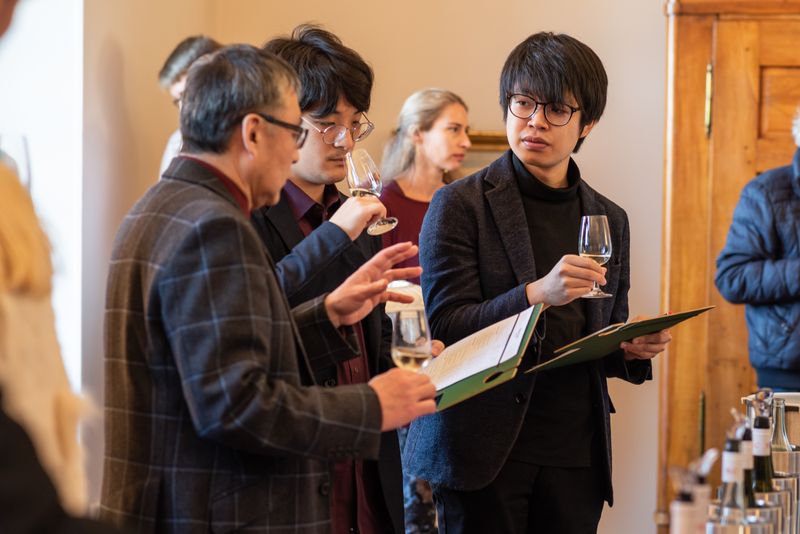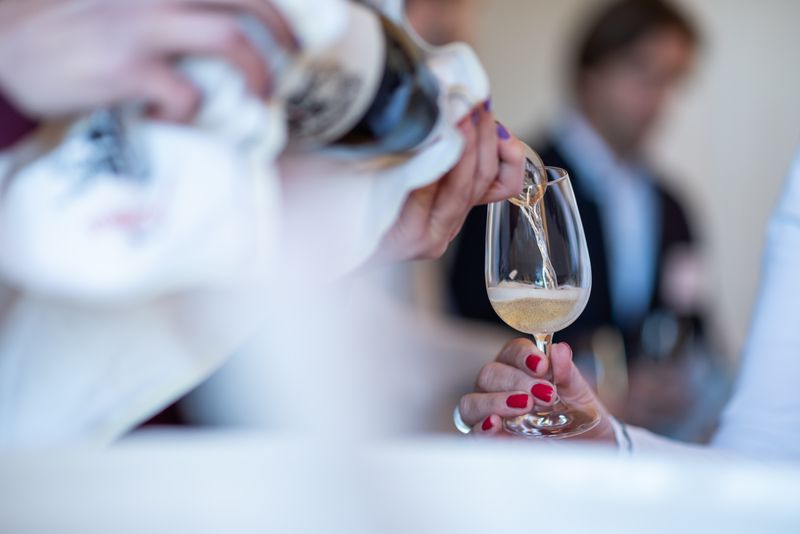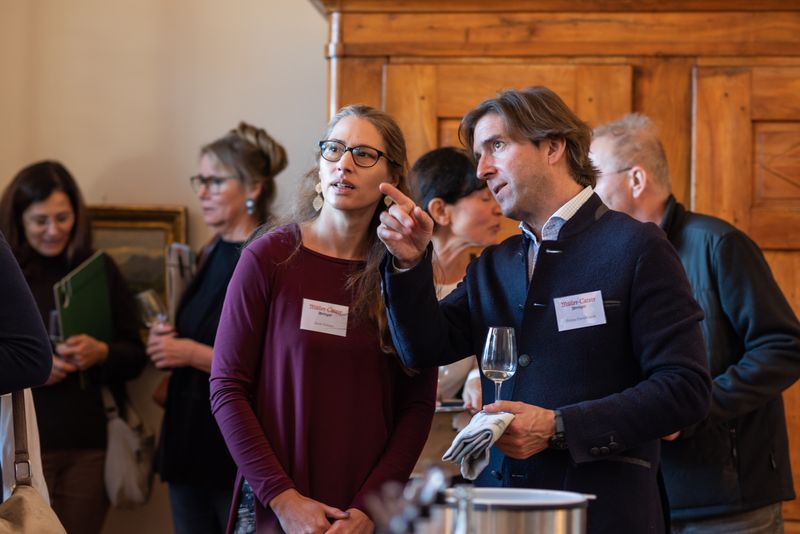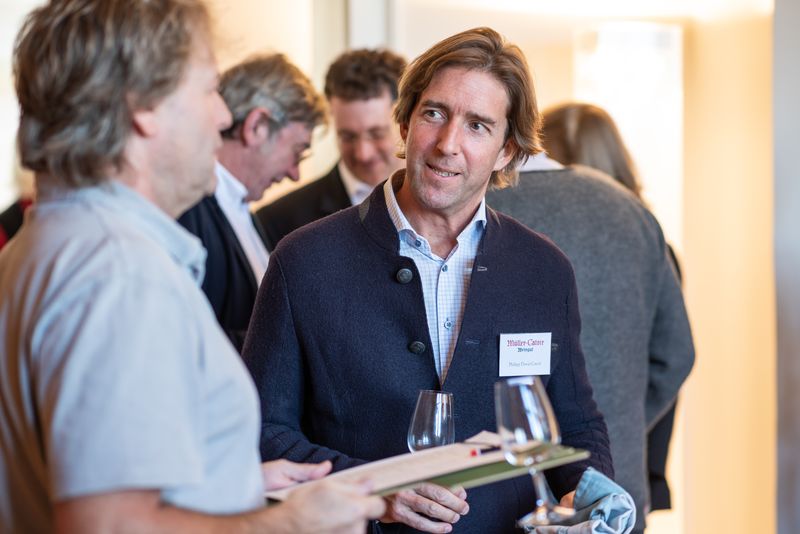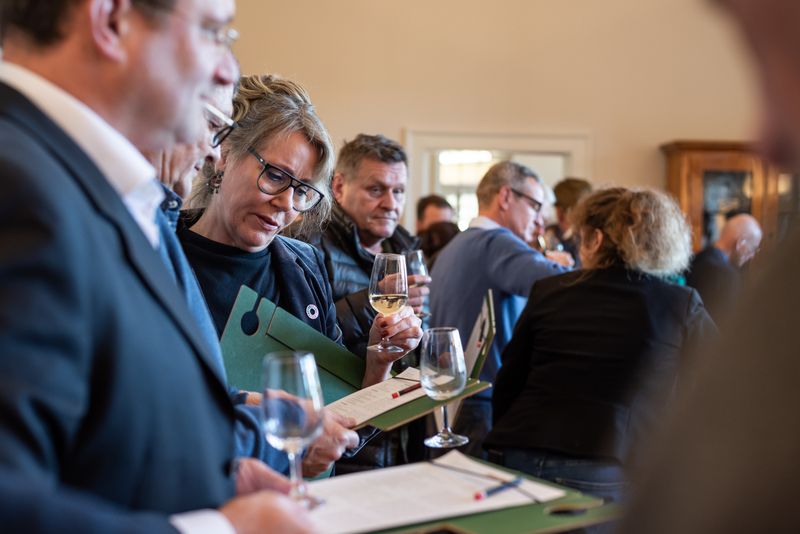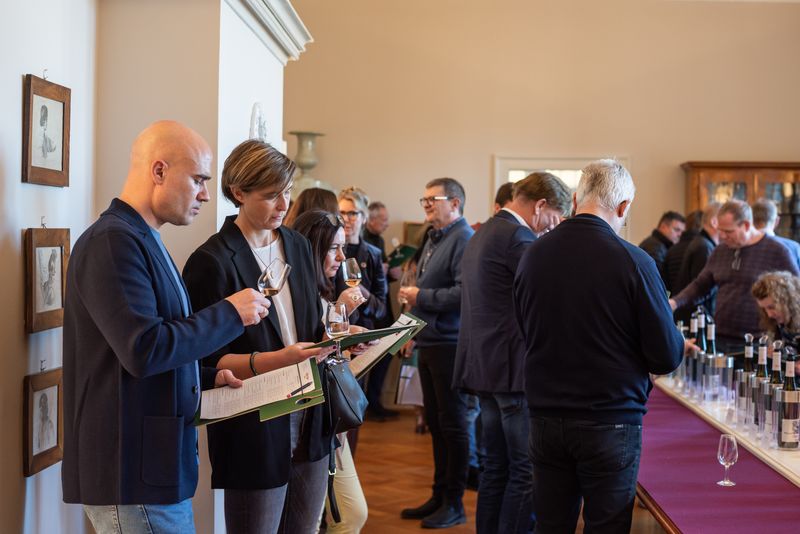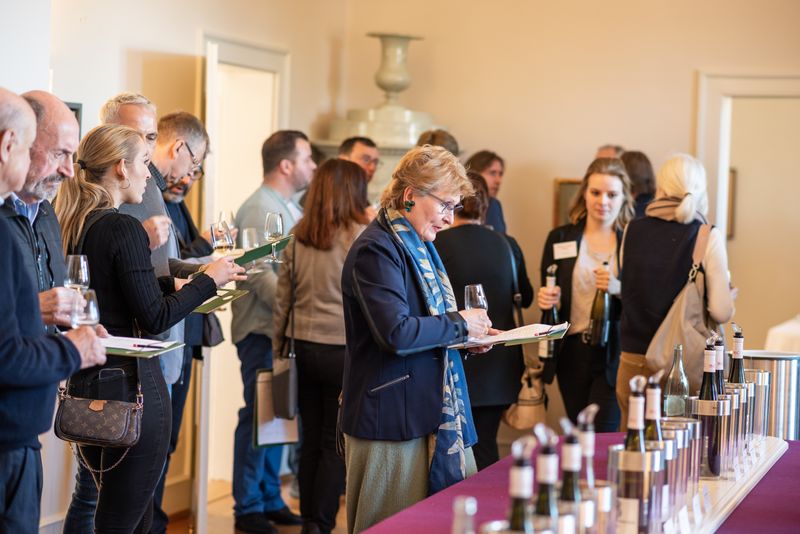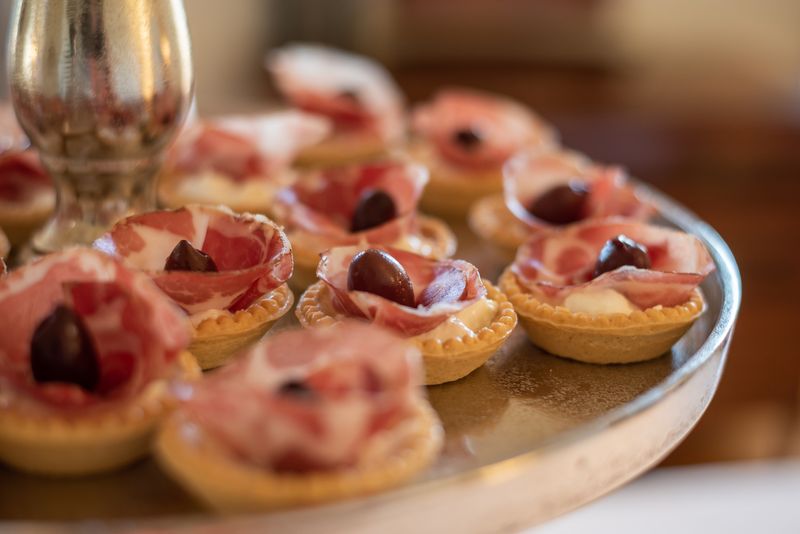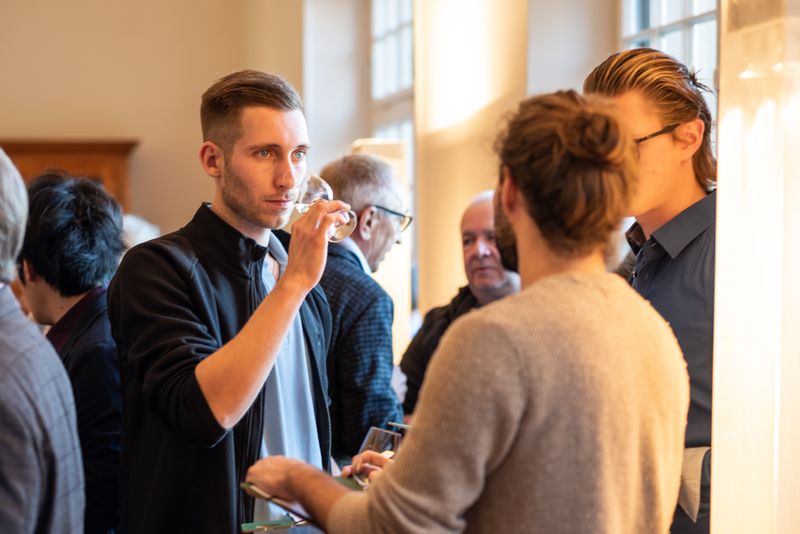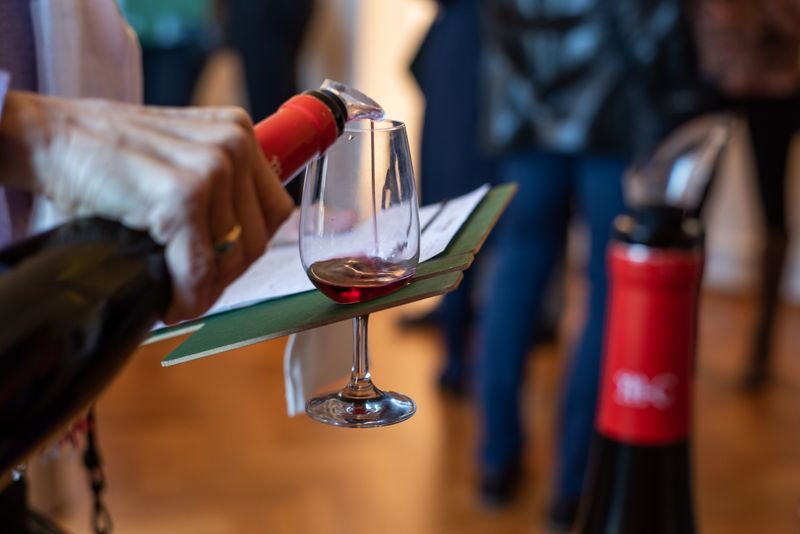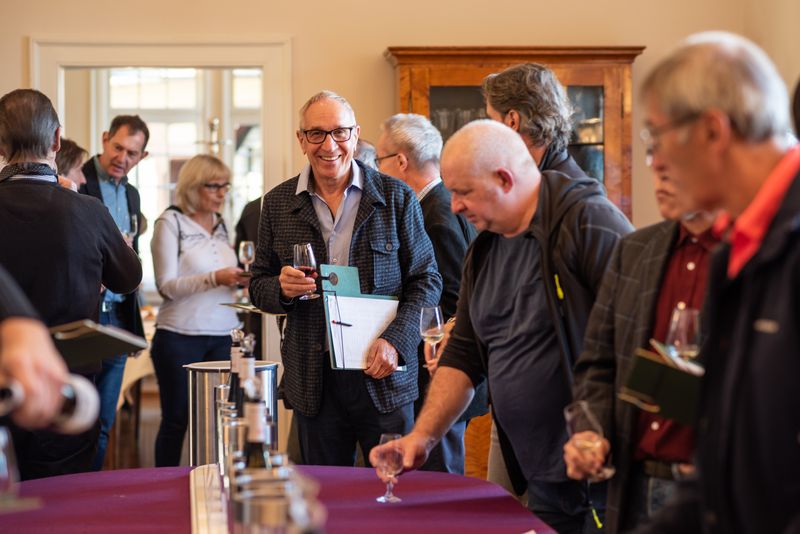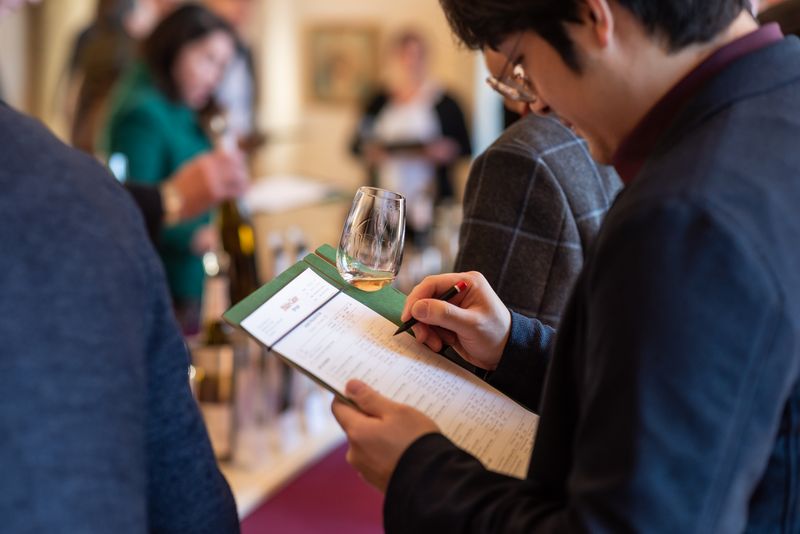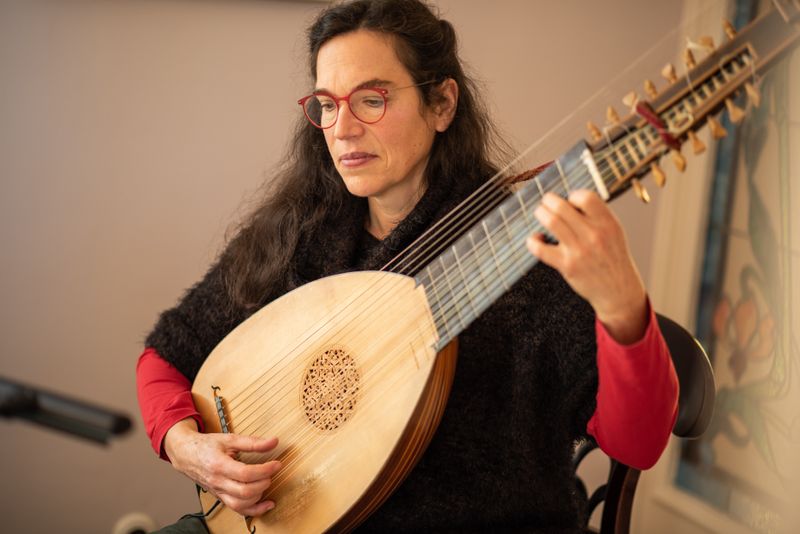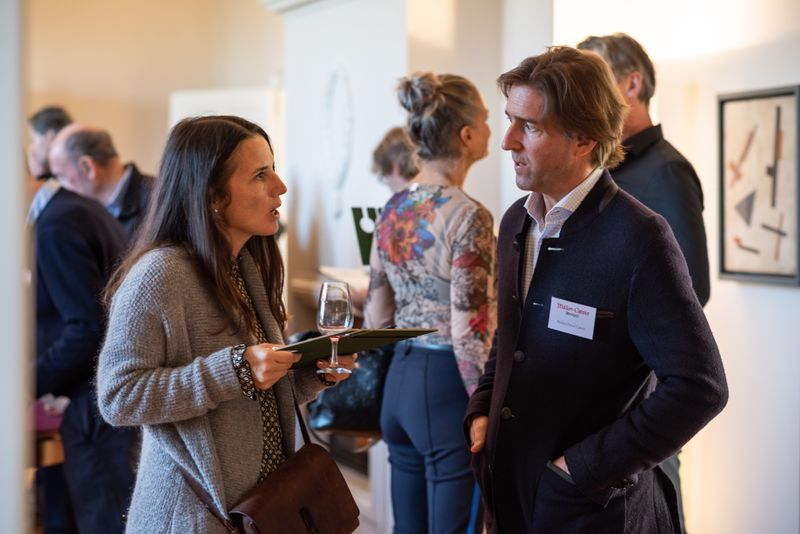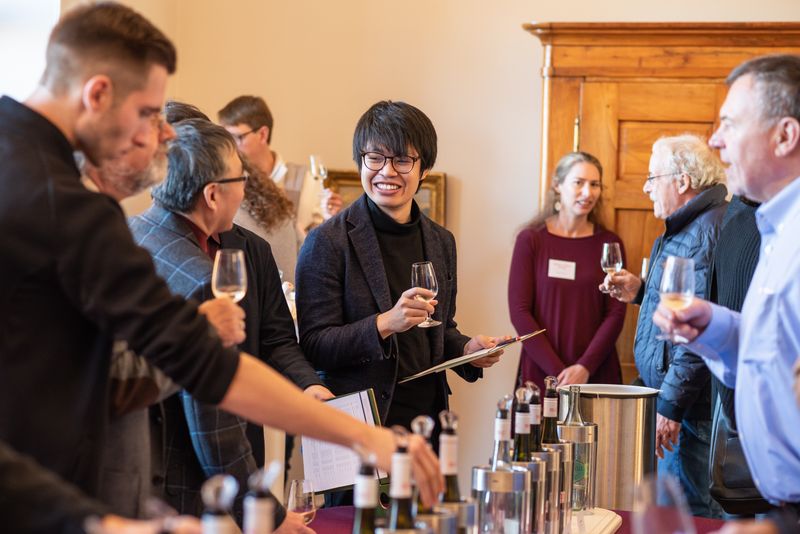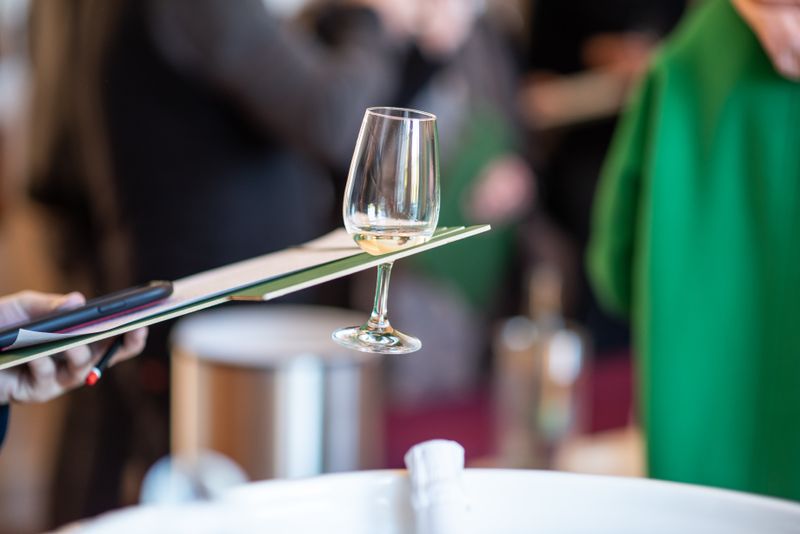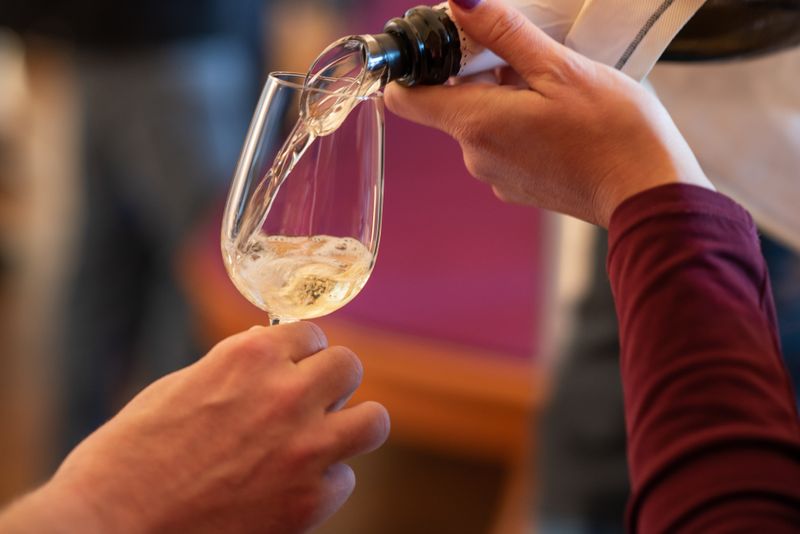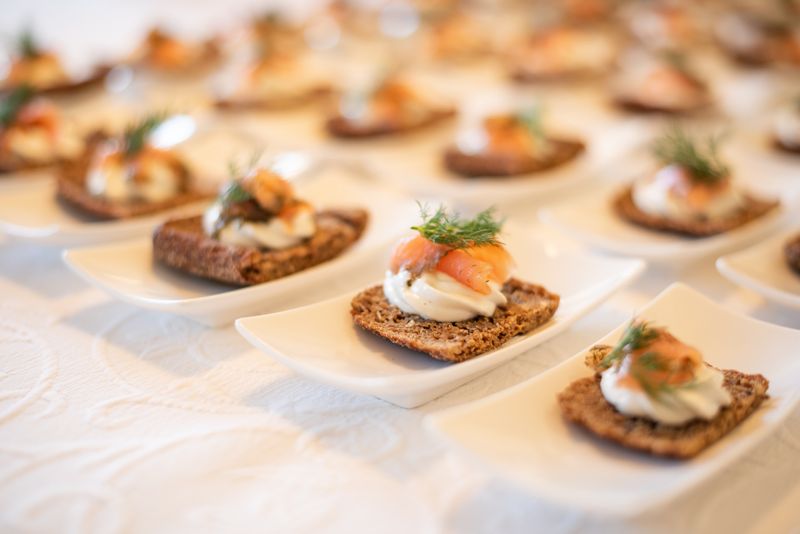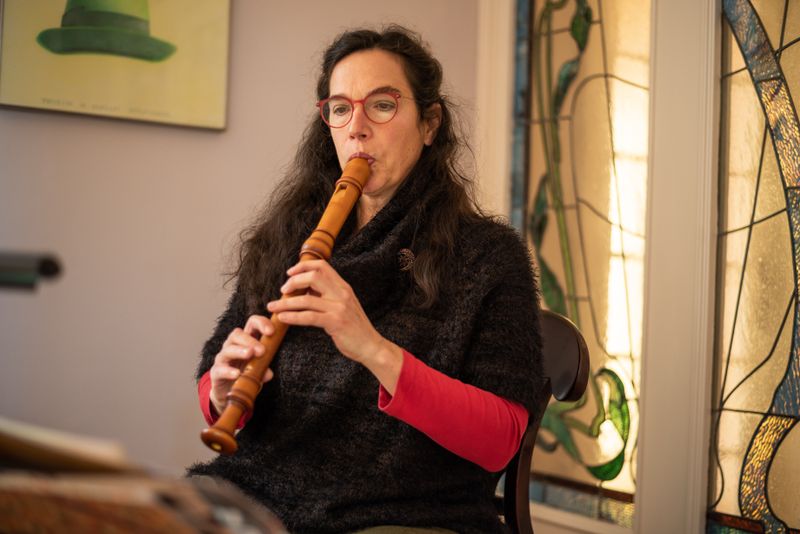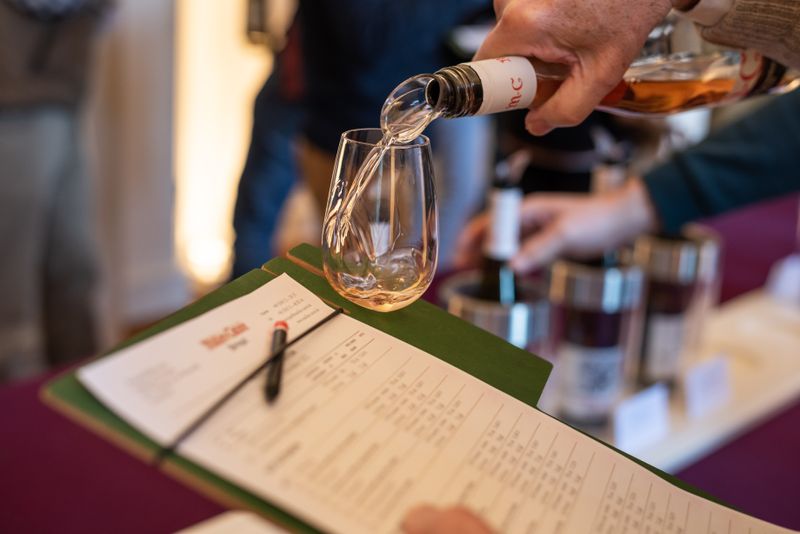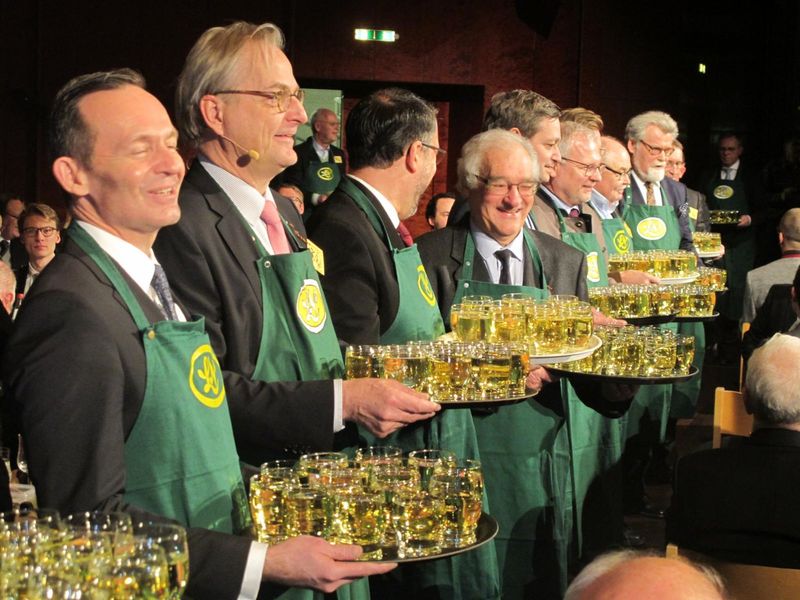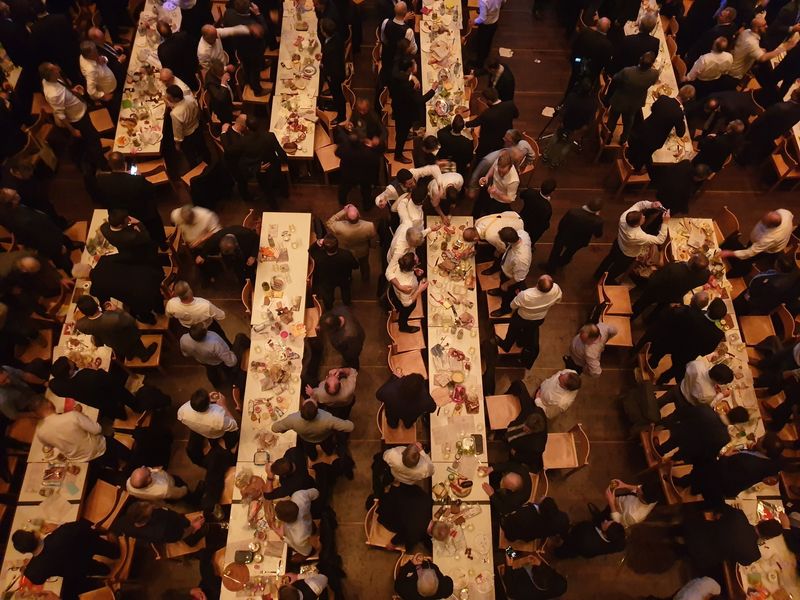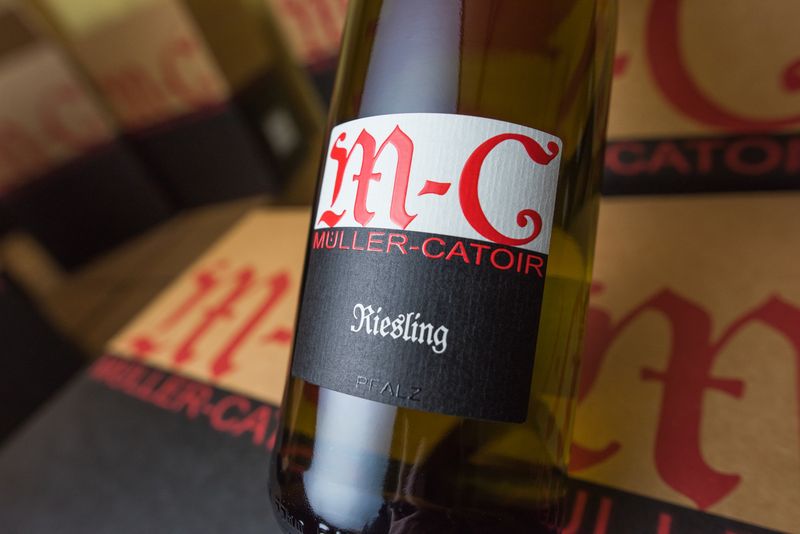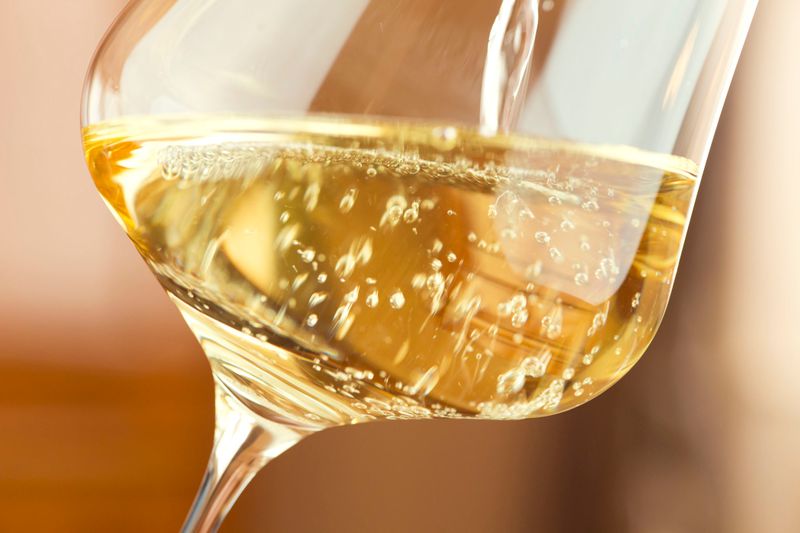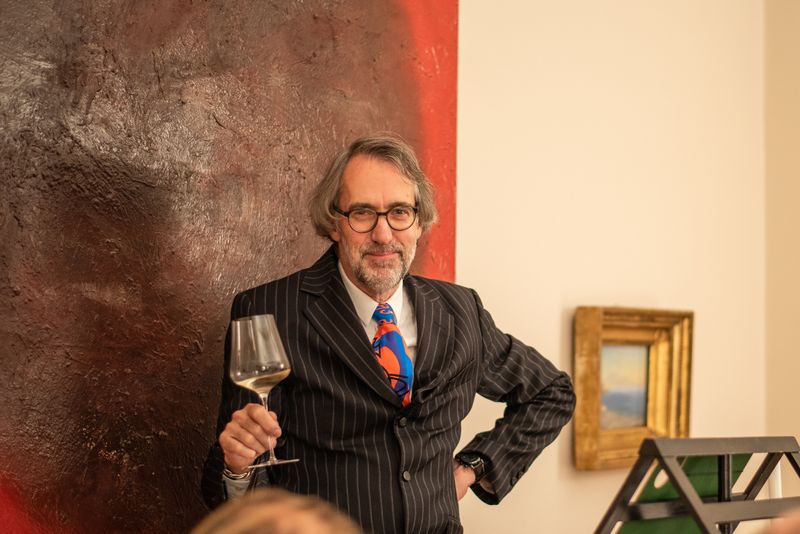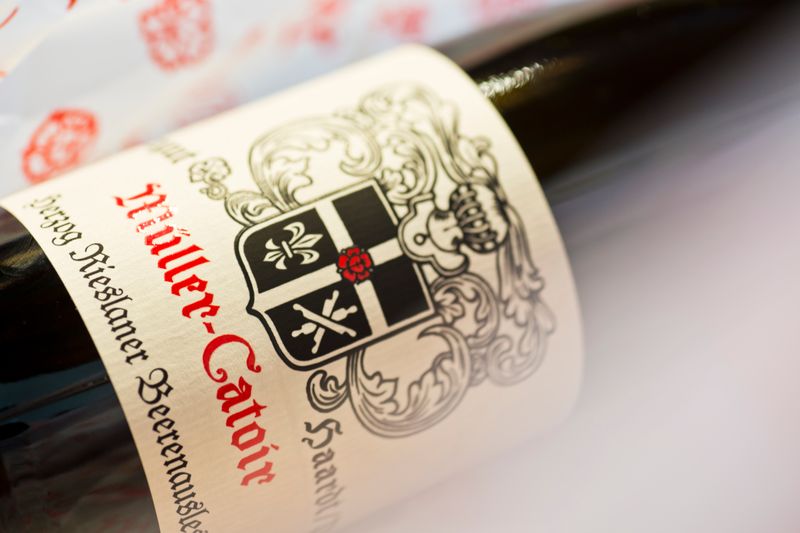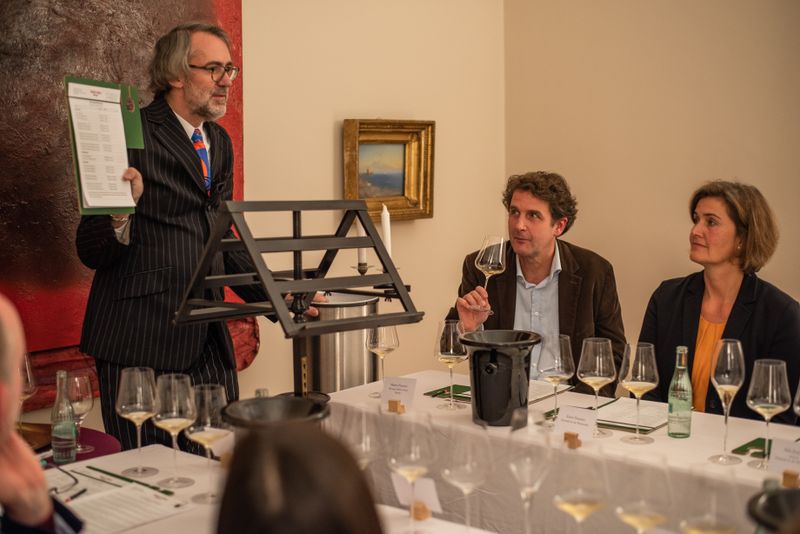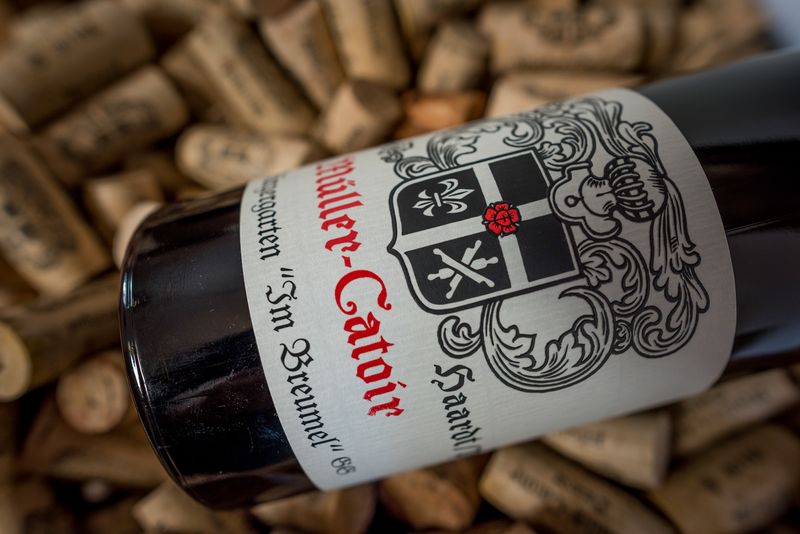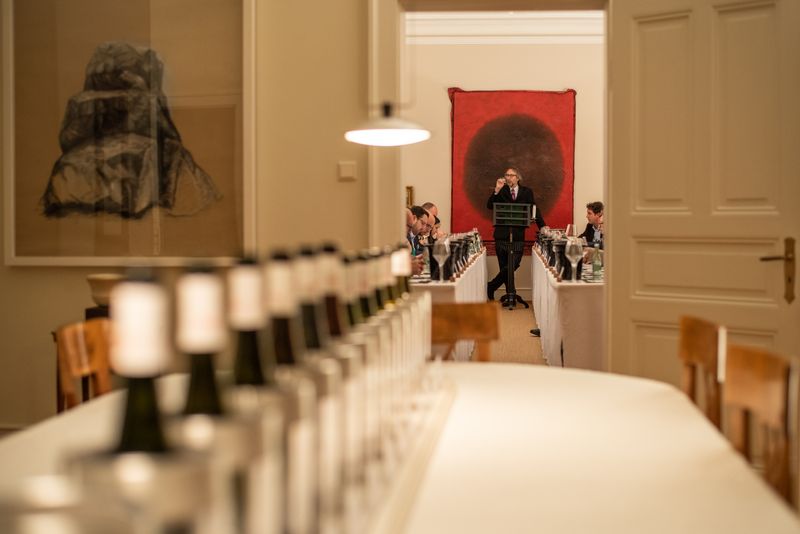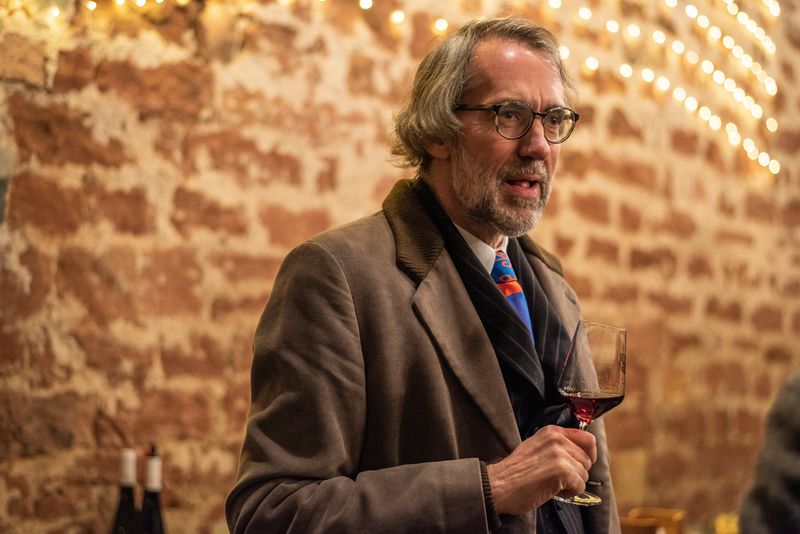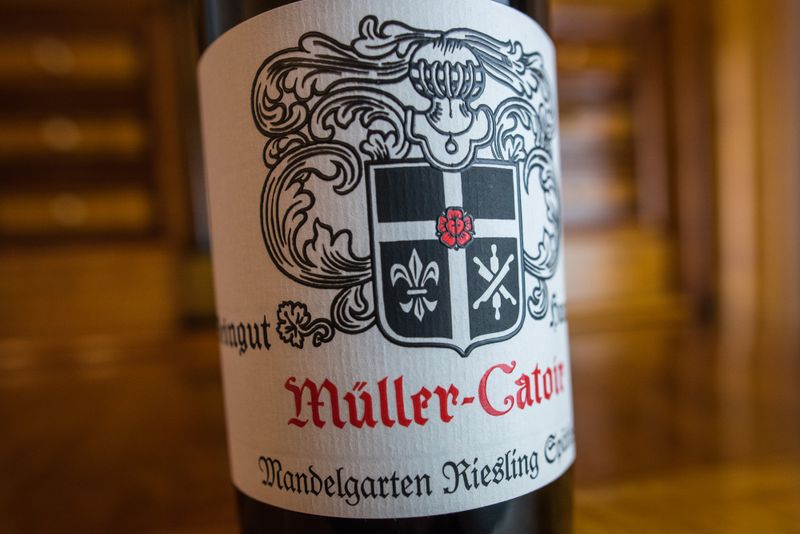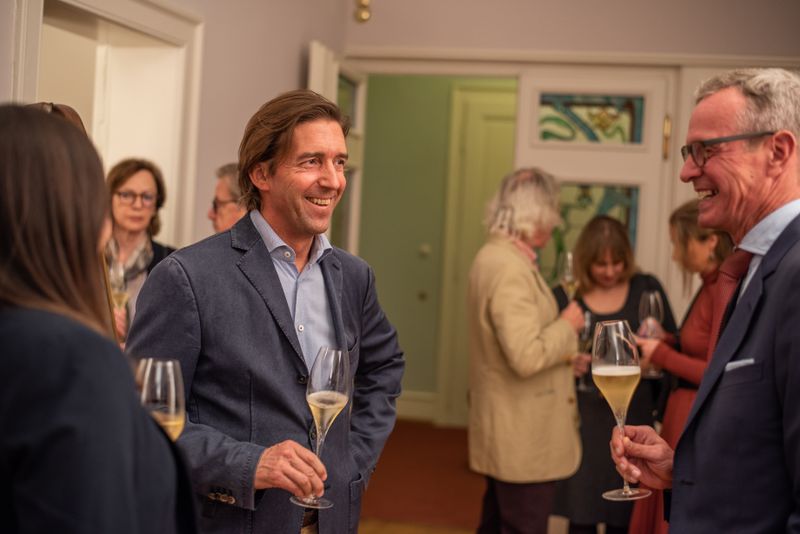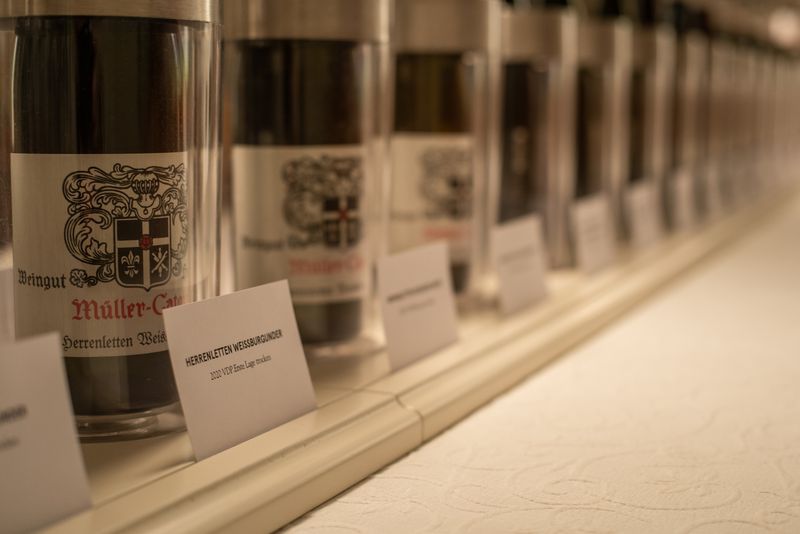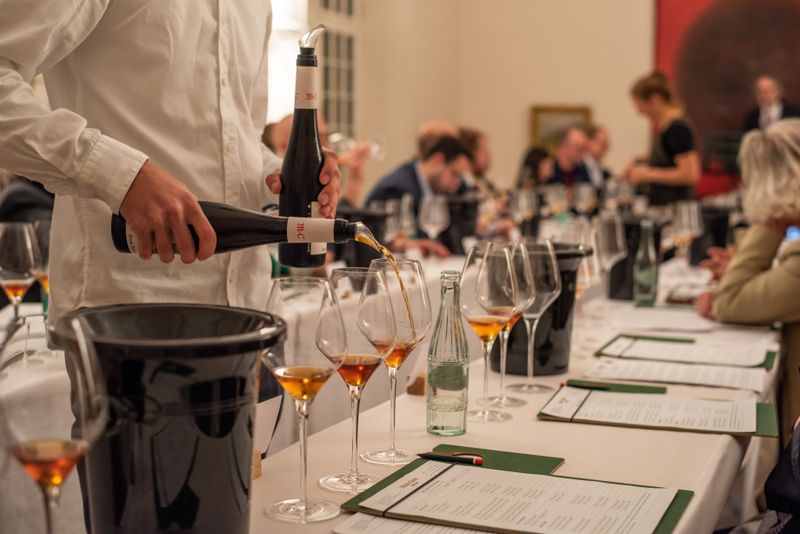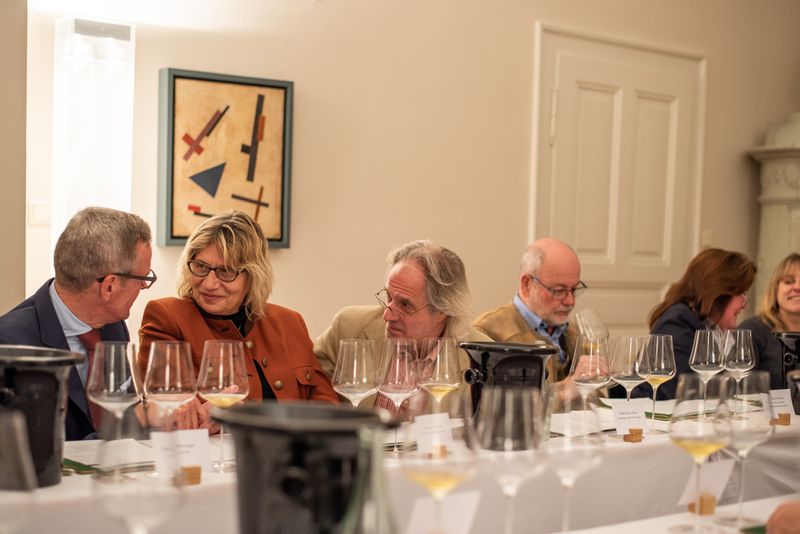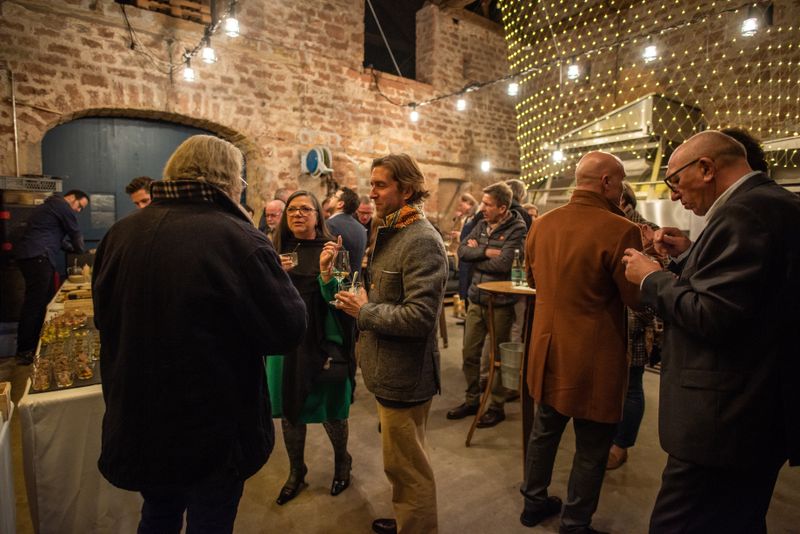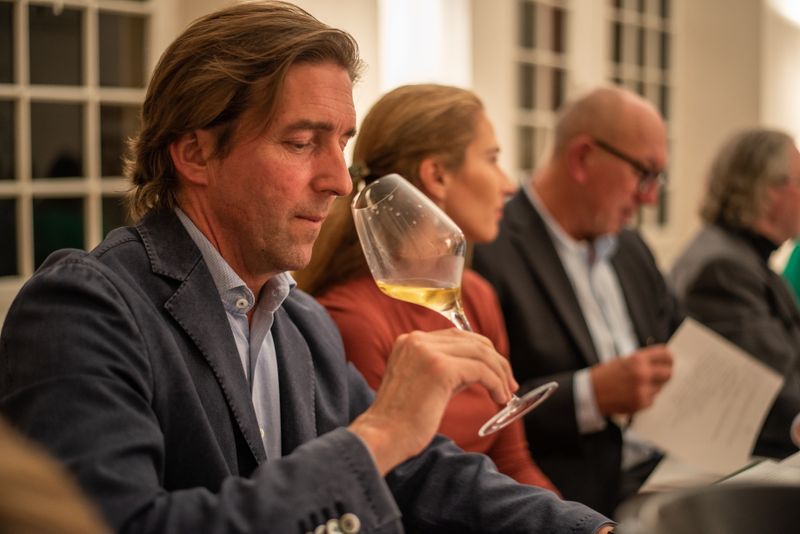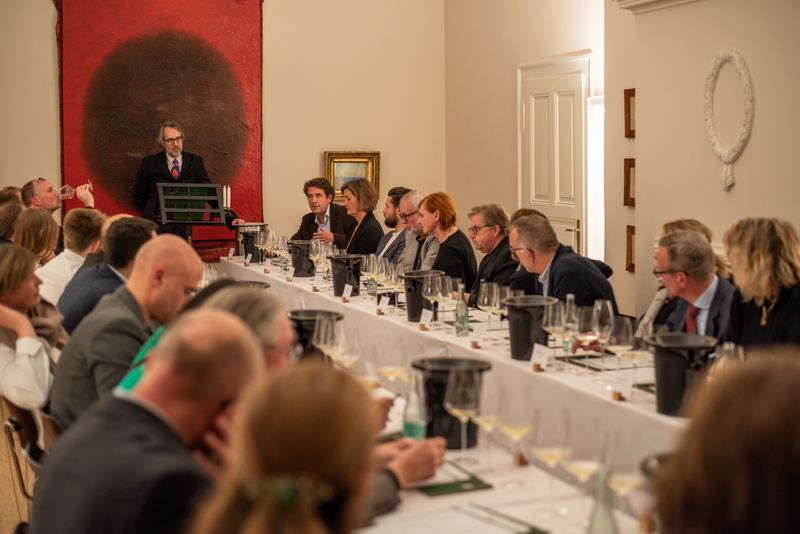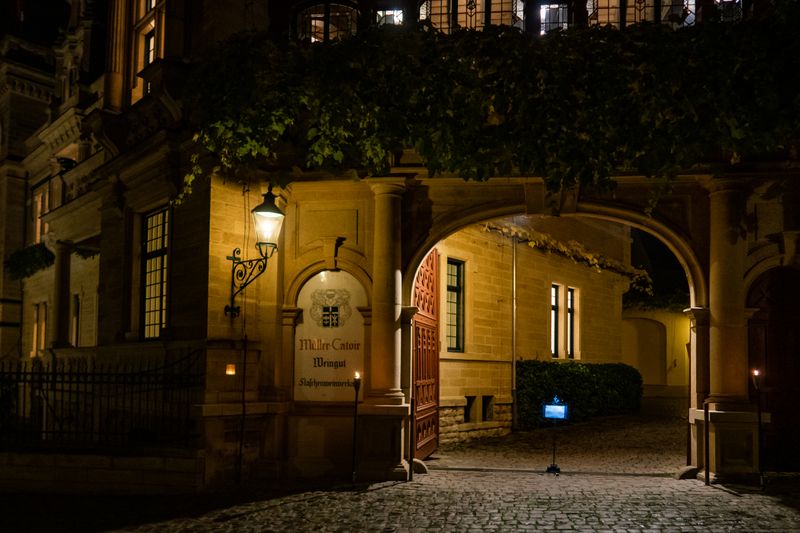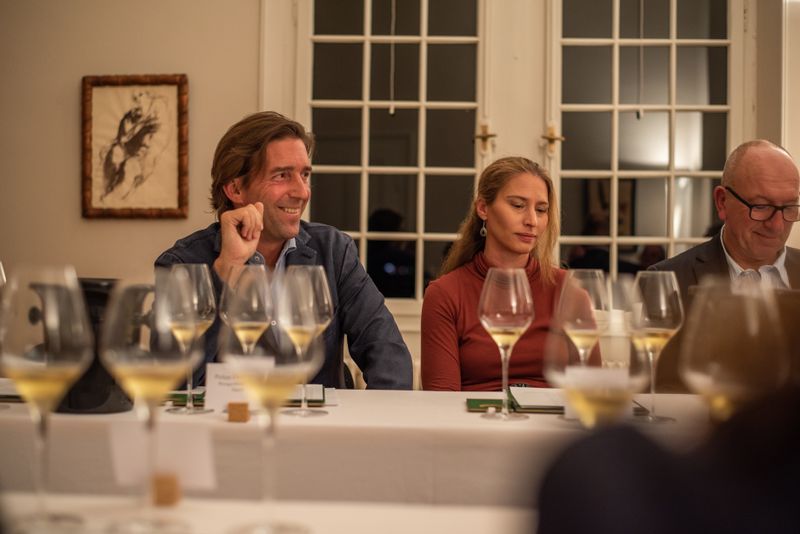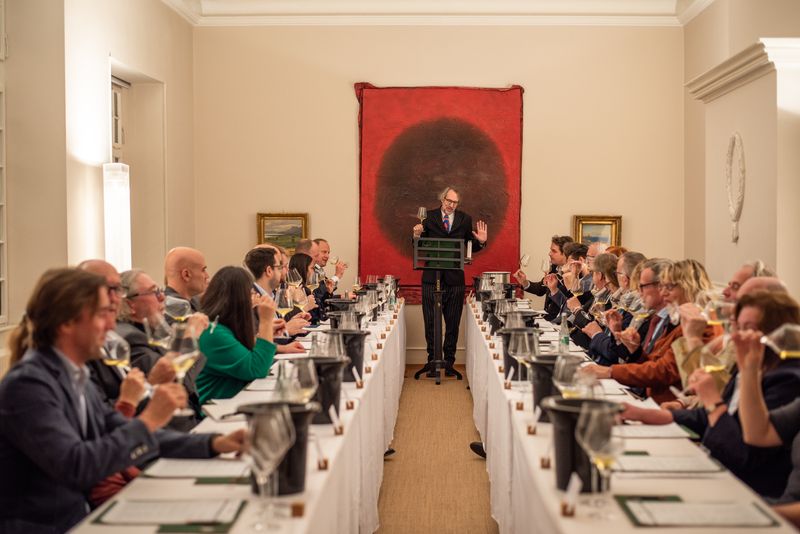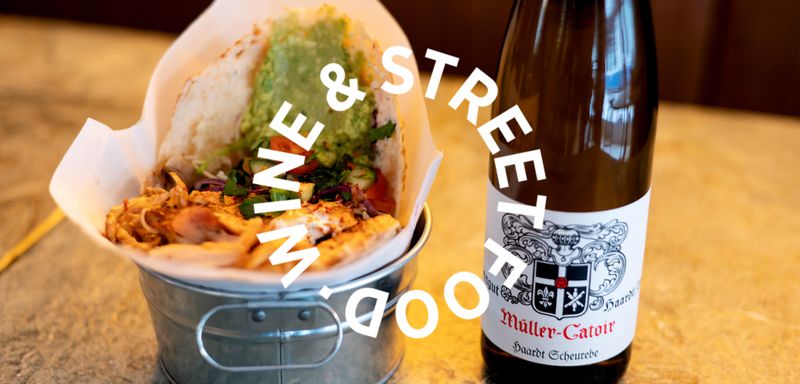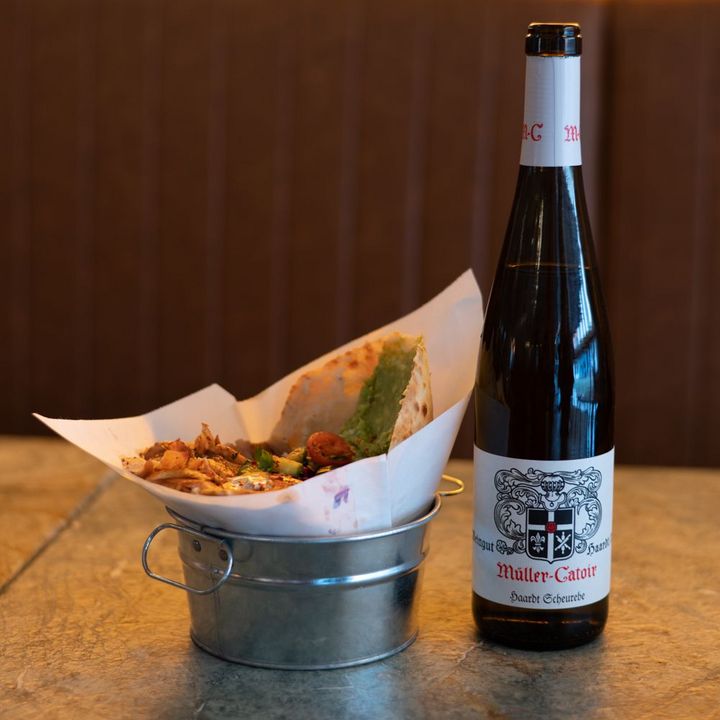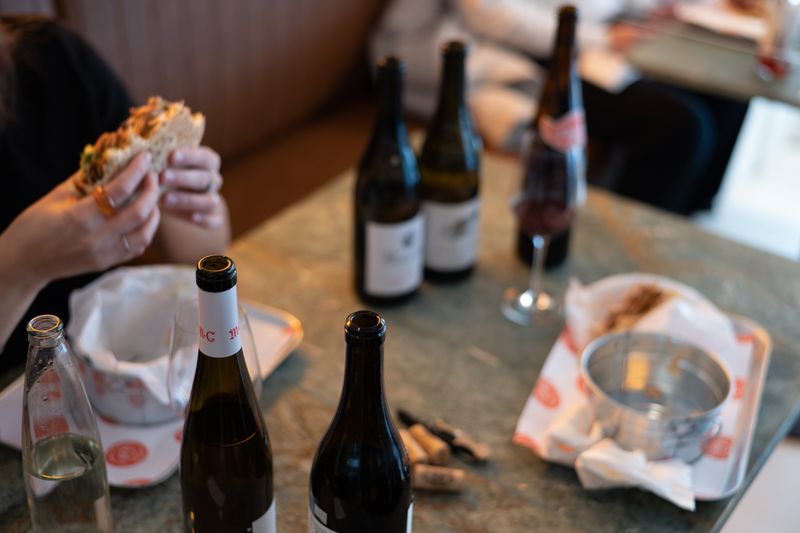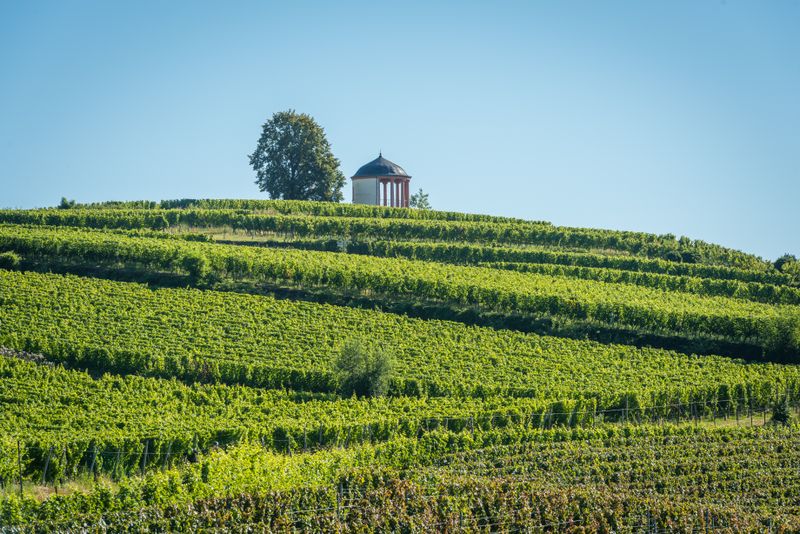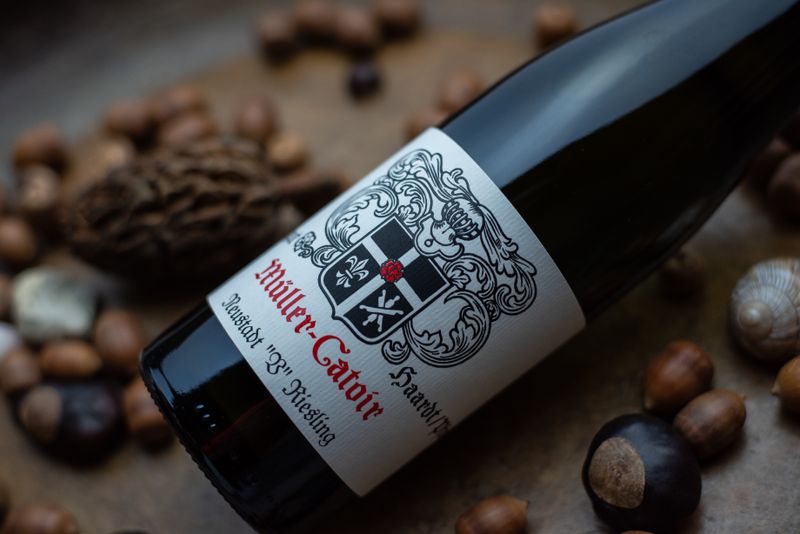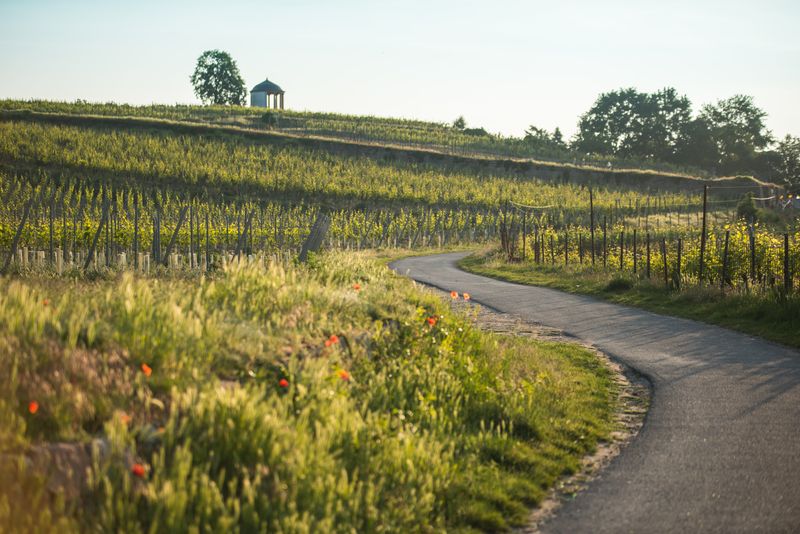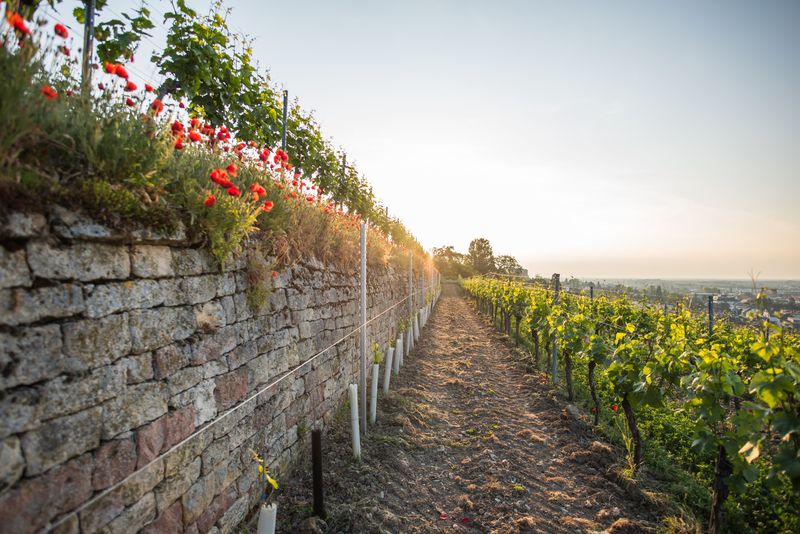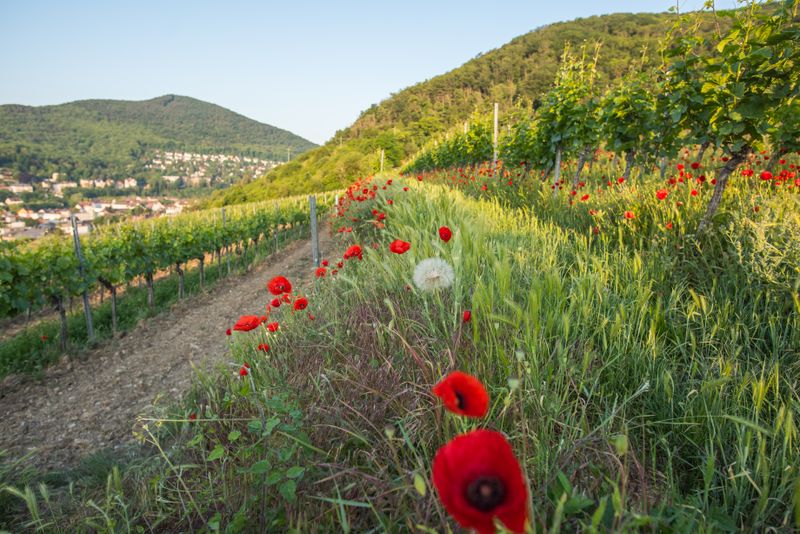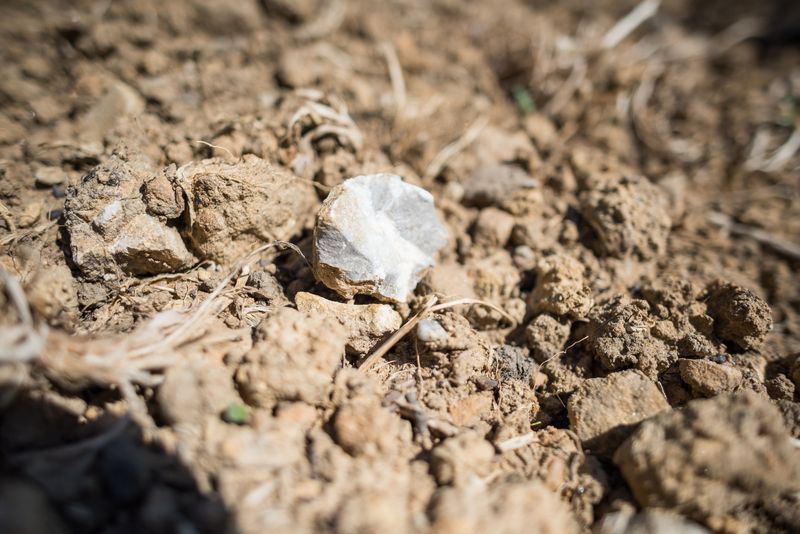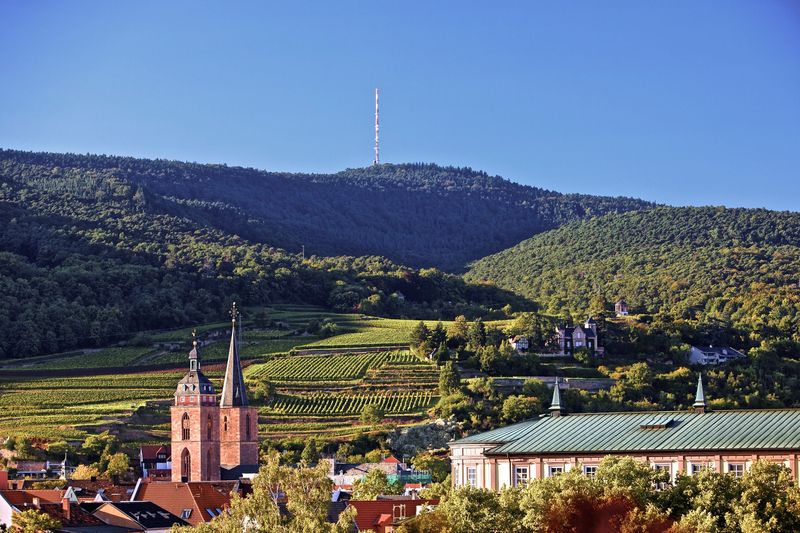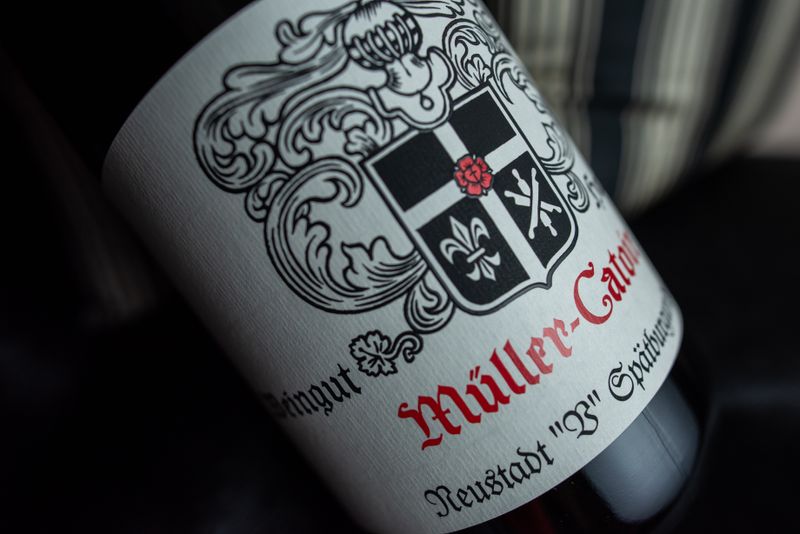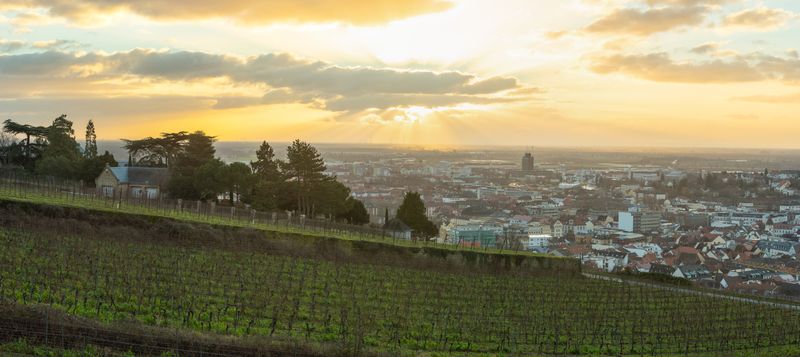Müller-Catoir white wines: Bliss-tasers to the palate
The World of Fine Wine | Tasting Notes | December 15, 2022 | By Terry Theise
In the second part of his review of the latest releases from Müller-Catoir, Terry Theise tastes the Pfalz estate’s portfolio of white wines, which, alongside some of the region’s finest Rieslings, also includes Muscats, Scheurebes, and Rieslaners that Theise “would not hesitate to call great.”
2021 MC Riesling | VDP.Gutswein dry ... glug-glug-glug
Trocken goes without saying. Damnably. I had a bespoke feinherb bottling of this that barely surmounted the crucial price-point for by-the-glass—with today’s Dollar it would be comfortably below it—and thus it was discontinued after my “retirement.” Pity, because it was as singular and perfect a Riesling as you could ever taste.
<sigh….> I tried.
Still, I always liked the original dry version, and now I like it again. I mean, really like it. It’s more fun than all the Mel Brooks movies put together. It is the purest expression of the riotous herbal and citric notes of ’21 and yet for all its zing, it’s also limpid and at-ease, and almost casually delicious, like it came naturally, like it was no effort in the least to just blast this perfection out to all of us. It’s the kind of wine you taste and think Why would anyone drink anything but this?
When ’21 is good it offers a totally unlikely conciliation of zip and flow, tension and calm. Now in its first year it’s not just drinky, it’s stupid-drinky, and I see no reason not to dive into these wines right now, and roll around the floor together giggling.
I’m leaning toward saying that the ’21s warrant young drinking. What???? All that acidity, and you don’t want to keep them? Well I really do wonder, and part of why I wonder is that four days in, this giddy beast is starting to nip with puppy teeth, and what I think’s happening is, that sharpness was huddling beneath a quilt of irresistible baby-fruit, and as that facet retreats the “expressive” acids start “expressing,” and what transpires in four days in the bottle is often a harbinger of what’ll occur with several years in the cellar. Thus my sacrilege. If you drink them young, you’ll enjoy the giddiest possible primary fruit, and if you wait you will squander that gift on a risk that the wines will develop according to an Idea you cherish—but it’s only that: An idea.
2021 Haardt Riesling | VDP.Ortswein dry
Trocken of course. Same alc as the M-C, interestingly. We have some attitude now. More demanding, less appealing, but we have to get serious some time. And here we’re introduced to an umami of the fields—if that doesn’t sound too precious. I mean sun-heated grass and herbs, cut hay, weedy greens. Even a small voice of gooseberry peeps up.
You choose. You won’t find anything more than hints of apples or stone fruits here, but you’ll find flavors you’ll like especially if you like high-toned Grüner Veltliners. I like it, up to the slightly astringent finish, yet I also appreciate that this winery offers the opportunity to cavil in tiny ways, because everything is smart and snappy and wickedly articulate. My recoil (such as it is) from the sardonic bite on the finish could be something another taster relishes. It’s a privilege to be persnickety when all the wines are this good. And saying that—this isn’t my favorite.
2021 Neustadt “V” Riesling | VDP.Ortswein dry
Tall bottle, alc 13%, Trocken naturally. An overt aroma reminding me of the old clone-90 fragrance—mandarins and pink grapefruit and tilting toward Scheurebe. But oh; this palate……
The reputation of 2021 will be made from wines like this. The question is to what degree these qualities are perishable, and this I do not know. But I can tell you that what’s in my glass right now is bloody superb. It’s still a little “wild,” and it has less fruit than it has spices and savories and almost a Nahe accent. Acidity could be seen as pointed until it’s buffered by a ludicrous saltiness. And for a winery as cerebral as this one can seem, this wine is awfully sexy, especially right from the freshly open bottle.
2021 Bürgergarten Riesling | VDP.Erste Lage dry
This isn’t the “GG” but rather the Erste Lage (1er Cru) single site wine, Trocken, alc 13%. It shows the classic fragrance from the site, mandarins, bergamot, sautéed apple sprinkled with cinnamon—those kinds of things. Especially silky and refined in ’21.
It’s the melody the Mussbach played on an alto-sax, now played on a soprano sax—even the same notes in the same register, just more piping now. We have a lemony citricity, but early-season Meyer lemons, before they grow too rich. And the wine is generally more reticent—yet I wonder what’s being held in reserve? Sometimes wines like this one can seem refined beyond all sensual existence, though I haven’t had the chance to review them when they’re 5-10 years old.
Again, it’s ludicrous to quibble when faced with such beauty. Much of what I love about Dönnhoff’s Leistenberg wines is evident here. I’m looking for the comfort that lives beneath the thrill. But perhaps my quest for consolation is misdirected. What grows clear is, this remarkable family of wines -22 of them in all—will speak differently as they are sampled differently, and I’ll spend the next 7-10 days twisting the sequences to catch myself up in errors I ought not to have made.
2021 Bürgergarten “Im Breumel” GG | VDP.Grosse Lage dry
Pretentious heavy bottle—as always especially egregious when a certified organic estate uses it. And—the word “Riesling” only occurs in teensy print on the side label.
The first time I had a Riesling from this then-new acquisition was back in 2002, when the only way to distinguish it was the AP # 2134. I sometimes wonder whether this estate would have greater “status” if they had five “GGs” instead of just this one.
It’s a clos in the heart of the Bürgergarten, yet as the years have gone by—and now especially—it distances itself ever more from the “parent” site. In effect it has none of the ingratiating elements of Bürgergarten, replacing them with an ancient-tasting kind of solidity, and what one might call a rectitude of minerality. There’s also a high-cheekboned chiseled sort of deacon-reserve here, a Shaker probity. It entails no small courage—or else just sang froid—to present your “GG” without it trying to “impress” the tasters who do their rankings early on.
Perhaps Franzen, for all his geniality, has a mystic streak where his wines are concerned, and if I might paraphrase him, if the ethereal is effective, the earthbound will follow. Not to mention, ’21 is hardly a come-hither sort of vintage. And really not to mention, it’s fairly straightforward finding paths among the fruits and flowers, but it’s another matter to pick ones way among the stones. And Breumel, bless its stringent heart, is a warren of stones. And ginger. And celeriac.
I’m tasting it for the fourth time, and have been consistently impressed. Yet it didn’t “show” well one evening when we drank a flight of the dry Rieslings in the kitchen while dinner was cooking. I was actually baffled, because I’d assumed the stature of this wine would prevail under any circumstances. It doesn’t change my opinion of the wine, but it does affect my feelings about it. Our pedagogical friend seems happiest when being carefully attended to.
Well I’m willing. Will there be a quiz?
2021 Mussbach Riesling Kabinett | VDP.Ortswein dry
It’s good that the estate still bottles a Kabinett and a Spätlese each vintage, for the clientele who prefer them or who simply have flexible taste. At times I have thought these wines over-sweet, but that could be because the dry wines, the many dry wines, are so dry that an ordinary sweetness seems blatant.
This is colder than my other samples—the cellar isn’t quite cold enough (in mid-November….alas) to leave everything out of the fridge – and this hasn’t warmed up enough. But: It’s a sterling example of the genre, and it isn’t too sweet, and it smells gorgeous, and if it is a little too rich, that can be blamed on climate change. It’s an apple tart in a glass, both the baked fruit and the buttery puff-pastry crust—and it ends day-1 of tasting with a fine send-off.
2021 Mandelgarten Riesling Spätlese | VDP.Erste Lage dry
Another heavy bottle. There are too many of these.
And an Erste Lage, a sandy vineyard giving Rieslings at their least “fruity” and most…one could say wild, almost feral. And what can sometimes feel too austere in a dry form can really sing when sweet. As it does here. I wouldn’t have minded a bit less sweetness, but how much would that have taken from the riotously vivid aromas? (Nor is the residual sugar high at all, at least on paper.)
It’s all too easy to second guess the mind of the cellarmaster, tasting the bottled wine in my kitchen almost a year later. I’m sure the ’21 acids felt like a warning—don’t spare the horses. Acid will swallow sweetness. People who buy these wines sometimes want to wait many years to drink them, and a paucity of sugar will tire them too soon. But the more I drank this, the better balanced it seemed.
We have a zingy sort of Spätlese without the usual citrics or malics or stone fruits but with something resembling shrub made from every herb in your meadow.
2021 Herrenletten Weissburgunder | VDP.Erste Lage dry
I’m happy they sent this. In the interests of time, when I used to visit on buying trips, I often bypassed the Pinots (Blanc & Gris) just to make time for everything else. So, this Erste Lage wine is something new to me.
Many German estates offer Pinot Blanc to provide a dry wine that’s both lower in acidity and more neutral than Riesling, and these are hugely successful there. So what will Mr. Franzen make of this variety, our hero of the N-th degree of specificity?
In fact I like the wine quite well. It has the approachability of PB alongside the detail of M-C wines. It’s not the way I happen to like to drink Pinot Blanc, but that’s just my subjective preference. This is explicitly, emphatically varietal—if I were teaching varieties to students I’d use this to demonstrate “Pinot Blanc” (before anything was done to it), and it’s certainly pleasurable to drink. Maybe more than just pleasurable. I need to get out of my own way sometimes….
2021 Herzog Weissburgunder | VDP.Erste Lage dry
As the above, this is another Erste Lage. It has a different structure, more tensile, more filaments and twigs and spices. It made me think of the Boxler PB from the Brand, perhaps the best in Alsace.
A curious wine. The things I like I really like; the minerality, the tension, the embedded richness, even the slightly-too-much treble. What perplexes me is the brevity, in the face of all that energy. It sings a clamorous song, and is exhausted. But not before it flings a phenolic bite at you as it’s taking leave. In the Jancis glass it asserts a Riesling-like stoniness, which at first is quite impressive, until it crashes into incoherence. You won’t notice this if you drink it with food.
However! I did not taste the two PB together, but rather one per day. I’ll retaste them as a duo and see what can be gleaned.
This I did two times, and each time I liked them even more. I used my “rounder” Spiegelau white-wine stem and found the wines singing.
2021 MC Muskateller | VDP.Gutswein dry
I want to do my first run-through in two flights, so 12 wines per day—more than my usual tempo. This came near the end of day-1, as a reward for my enterprise (!). That’s because Catoir Muscat has been a totem-wine for me for the last thirty years. I think it is among the Great Wines of the world, not because it is exalted but because its very lack of (what we’d call) profundity is itself profound.
I wonder if Martin, tasting these wines over all the 20 vintages he has stewarded, ever thinks “Who could ever have imagined I’d be so good with this variety??” I have never quite found a Muscat equivalent to these wonders from Müller-Catoir. The Goldert from Zind-Humbrecht is the north-star for the variety, yet I doubt even that wine can approach this one in detail, psychedelic brilliance, and improbable varietal nuance. This is simply one of the very greatest not-great wines in the world!
2021 Haardt Muskateller | VDP.Ortswein dry
To clarify (if needed) the so-called “Muskateller” is in fact the Gelber Muskateller, the yellow-Muscat or small-berried Muscat or, to reduce it to its essence, the effing difficult Muscat. My friends and I call it “the good one,” or would, if I had any friends who shared my ridiculous crush on this variety.
In effect this is the “GG” of Muscat, wherein its assertive varietality is (to some degree) subsumed into a general vinosity that has a boggling quality for the unwary taster. Here I must wonder….has any vintage of ZH Goldert been better than this? I love that wine, buy it whenever I can find it, order it in restaurants even if it doesn’tgo with my food, yet this is at least its equal.
Why? Iron, volcanic (black) salts, Thai basil, not to mention a virtually incomprehensible complexity of herbs—plus wild lavender—not to mention a subtle but discernible minerality, all leading to a cogently great example of this admittedly emphatic variety, which has never been nobler than it is here. The final mystery is the fragrance of peach in the empty glass, which let’s face it is completely batshit crazy.
I cannot fathom the poverty of my world if it didn’t contain wines like these.
2021 MC Scheurebe | VDP.Gutswein dry
A high-tones neon buzz of Scheu aromas, especially sage, savory and pineapple. It smells like it wants you to faint into it.
This is ridiculously good quality for a wine of this modesty. It’s deft, amazingly complex, both expressive and courteous, crazily herbal and citric and even mineral. Yes the finish is a little shrill—’21 is not without its claws—but its discretion in the face of its absurd animation is almost without compare, as if the wine insists “Don’t mind me….” while it scatters the craziest most intricate flavors in its wake.
2021 Haardt Scheurebe | VDP.Ortswein dry
Village-quality now.
Look, it’s well known that I love Scheurebe; I loved it at first sip, at a long since vanished winery in Wachenheim back in 1978. Because I adore it, I don’t mind when it’s emphatic. It shows, at such times, a sort of noble profanity. A dally in the profane is good for a person, I think, and so I indulge both myself and the wines.
Sometimes, though, a Scheurebe can also show a delicacy and considerateness that seems to have no equivalent. You’d look to Sauvignon Blanc, and I often like Sauvignon Blanc (and sometimes love it) but SB speaks a wild kind of tongue, while Scheurebe will sometimes recite in a Riesling timbre.
I started to write “like this one…” but drew up, because this actually feints toward Grüner Veltliner in its slimmer more herbal dialects. (An aside: There are hack growers in Austria who’ve been known to deploy an enzyme that makes their GV taste like Scheurebe, and so the sorry circle is complete.) In any case 2021 is kind to Scheurebe, giving it a dialectic and discretion it doesn’t always show, while preserving its ornery varietality and also encouraging a refined tenderness that does make a guy think of Riesling. Only the acid bite of so many ‘21s obtrudes upon the eerie and tender affection of this almost-great beauty.
2021 Haardt Sauvignon Blanc | VDP.Ortswein dry
Apropos of which…..
It’s one of the very few times I’ve thought this winery took a false step. SB is trendy, and while I wouldn’t ever accuse them of pandering, they do not need SB when they already make the world’s best Scheurebe. Or?
Bearing in mind, again, that ’21 seems to have been hostile to SB in Germany, thisaroma is really uncouth on the heels of those lovely Scheus. The palate is excessively vegetal, and while it doesn’t careen about the room upending the bric-a-brac, it’s not a welcome guest.
They tried for a deftness here (and there seem to be a few grams of residual sugar in the mix…) but the glare of the Scheurebes cast a pitiless light on this fellow.
2021 Herzog Rieslaner Auslese | VDP.Erste Lage noble sweet
Alc. A remarkable 11.5%, signaling either a not-very sweet wine or a massively ripe wine—so let’s see.
Or let’s not see, for a fear this may be corked. There is massive botrytis, with which TCA can be confused….but this is, tragically, unmistakable.
2021 Herzog Rieslaner Beerenauslese | VDP.Erste Lage noble sweet
The signal genius of Martin Franzen, and of the proprietor who enables and applauds his work, is to render even the richest wines with the same sleek lines that move like calligraphy throughout the entire range. This can make a wine like this one both explicable and inexplicable.
Explicable because you can taste it; its flavors are not washed over by gooey blankets of fructose, and inexplicable because you are entirely defeated by the complexity of what you taste. If a wine like this doesn’t pin your shoulders to the mat, you never entered the ring.
Rieslaner can (and often does) reach mega-ripeness by dessication rather than botrytis. You gather clean raisins. I think that’s what I’m tasting here. Because this is more an orgasm of clean Rieslaner than a wine wrapped in a heavy cloak of noble rot. At this level of concentration the talk is “bananas” or plantains, within which is all the fundamental insanity of this astonishing variety. I’ll keep taking teensy sips of this over the next bunch of days, but on first approach the wine is galvanic rather than enveloping. It sends a bliss-taser to your palate. It shrinks you, until you are ecstatically puny.
